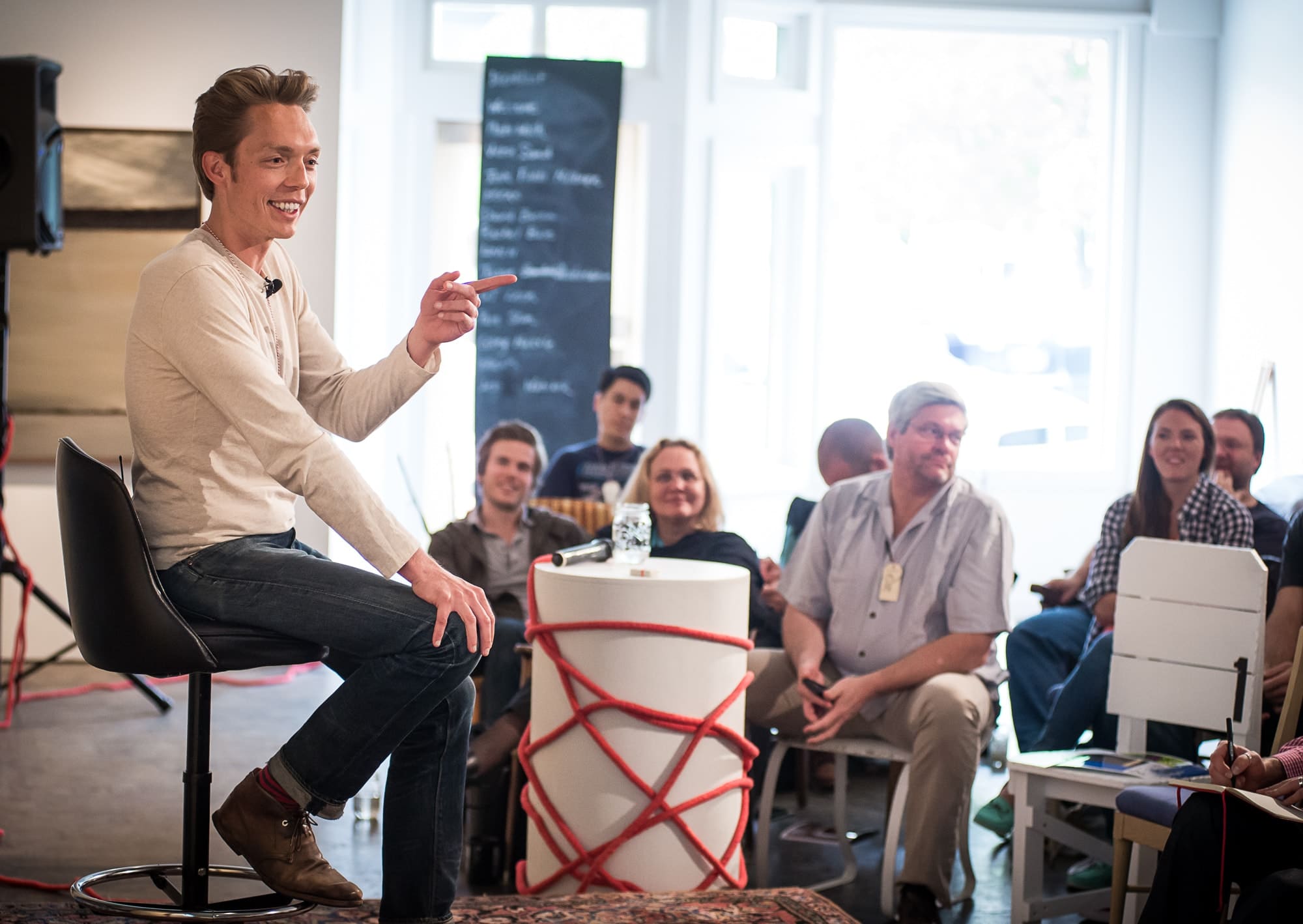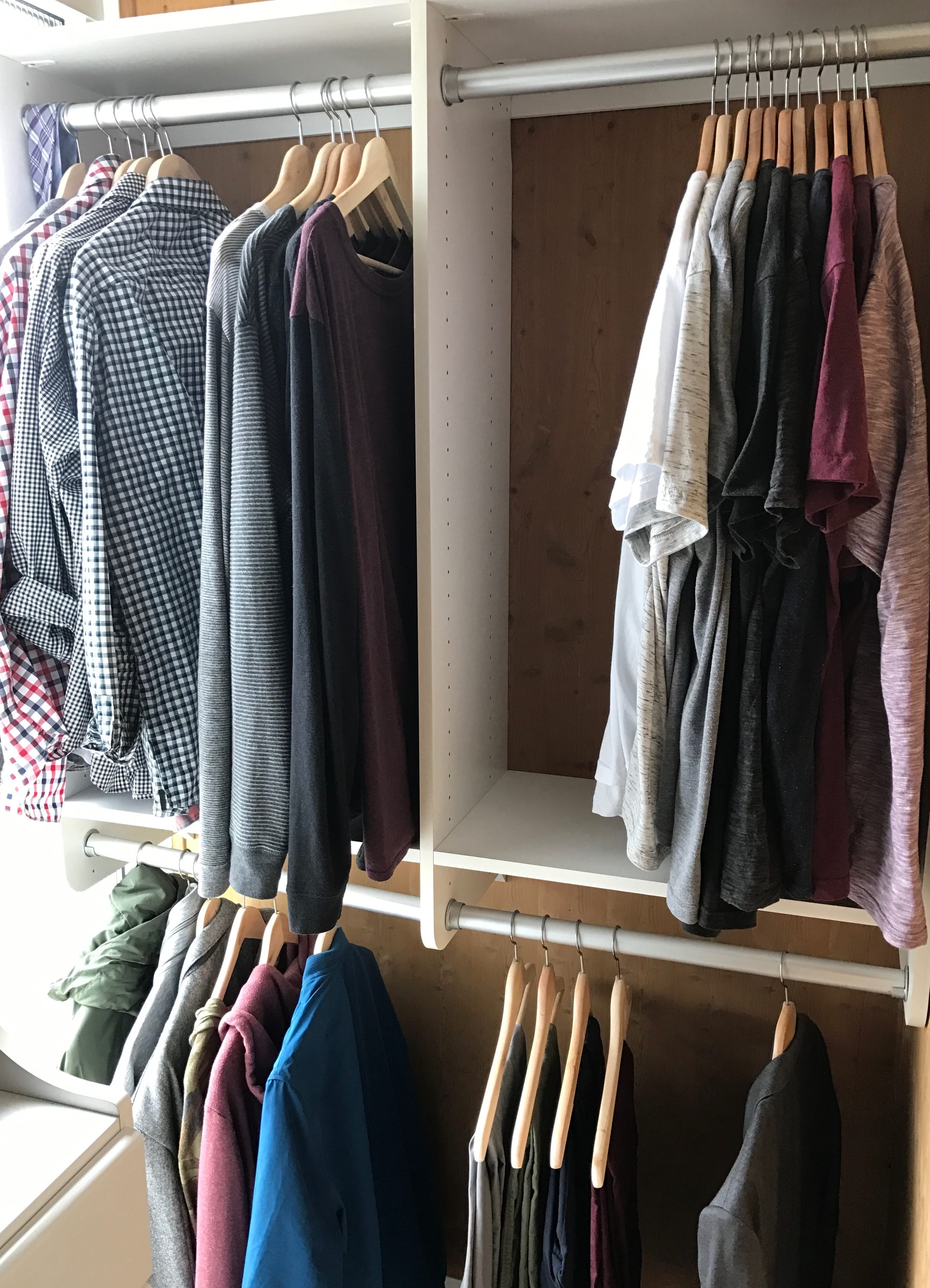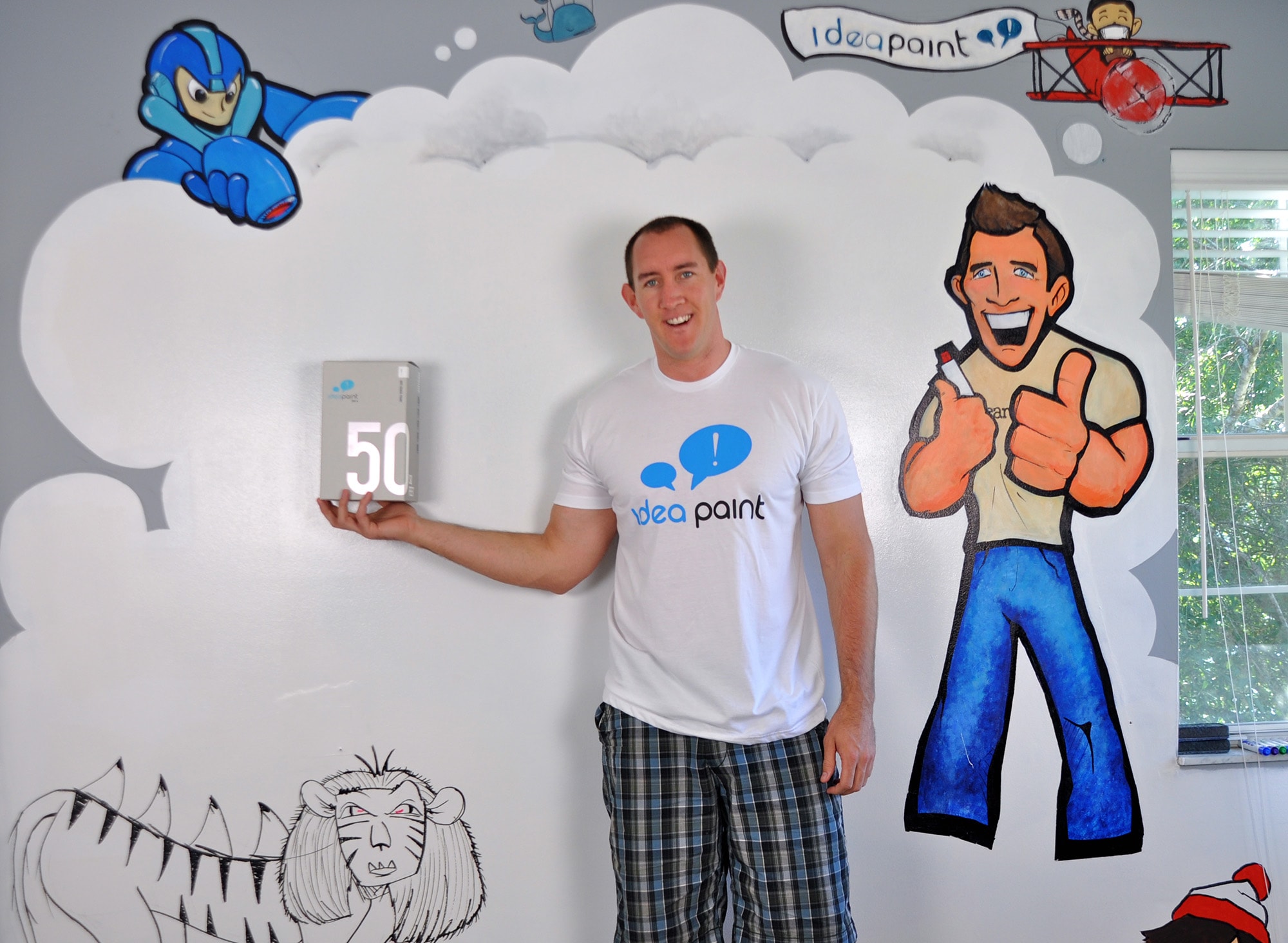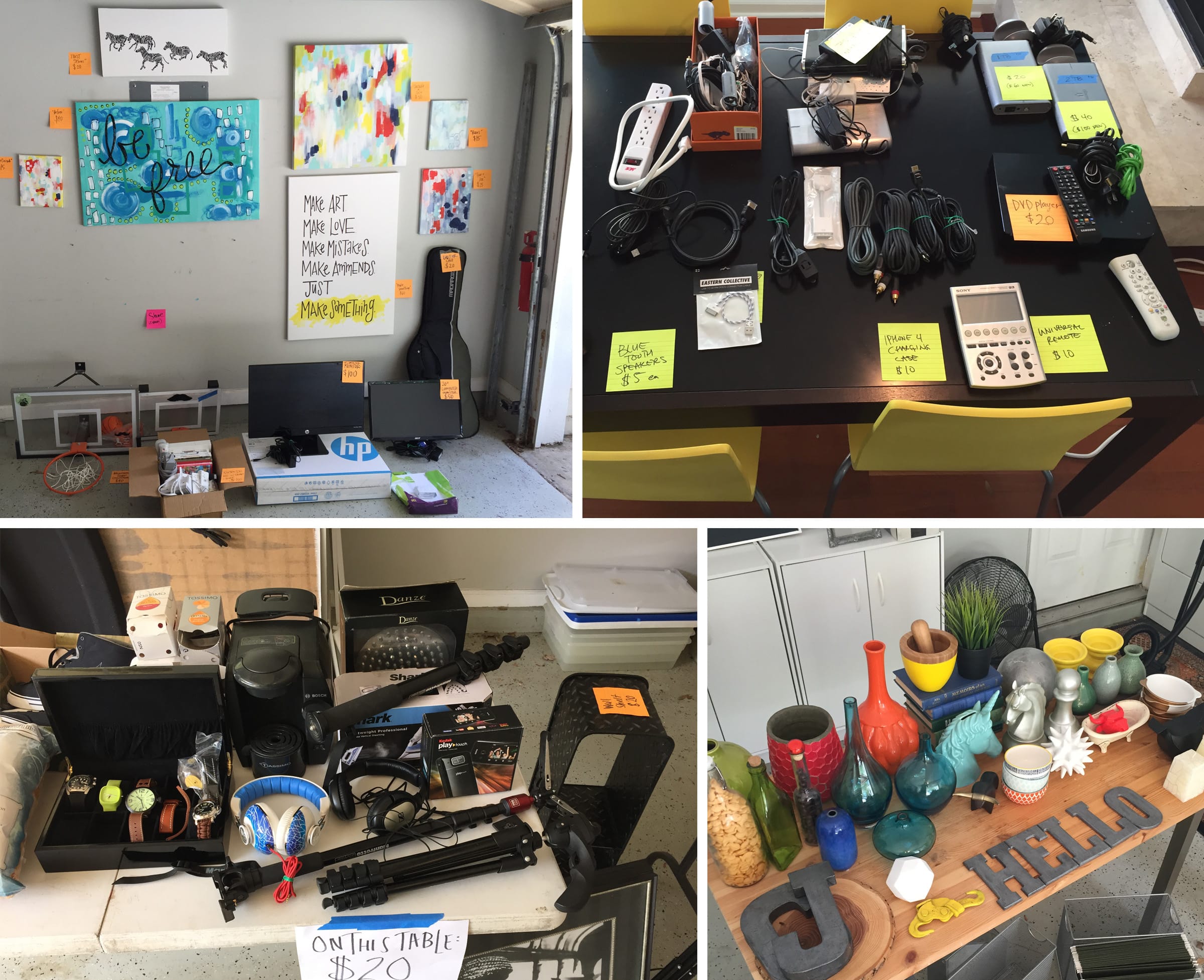I hope the word minimalist doesn’t turn you off, because I’d like to explain the benefits of minimalism and why I believe with every fiber of my being that you should try to find your own flavor of minimalism.
Before we take a single step further, let’s talk about what minimalism is and isn’t
Minimalism is the idea that you can live with LESS, but get MORE out of life.
Minimalism is the idea that you only allow things in your life that you believe will bring you value.
Minimalism is not living in a home with just one chair.
Minimalism is not a cult that keeps you from buying things ever again.
Minimalism is different for everyone
A few years ago, I was not a minimalist. I was an electronic gadget-buying machine. Amazon Prime and I were in a monogamous relationship. I thought that buying new things would make me happy, and oh, did I buy them.
I expertly justified buying new things, especially moderately expensive things. I convinced myself that because I had the financial ability, I should compensate for all the times when I was younger and wanted things but couldn’t have them. Along with buying things, I also remember having goals that I thought would make me feel good about myself (read more on this: the pressures of society).
All of those thoughts, buying habits, and societal goals came to a screeching halt in late May of 2013. My wife, Caroline, and I sat in the audience of a small hand-crafted conference in Fargo, North Dakota, and listened to Joshua Fields Millburn tell his story. It’s a story that I’ve shared a bit about before.

(Joshua Fields Millburn on stage at Misfit Con 2013, photo by AJ Leon)
Joshua Fields Millburn’s minimalism story changed my life
Joshua had a job that paid him well, but he was constantly buying things to try to fill a void in his life. It wasn’t until he realized he was truly unhappy and that all the stuff in his life was weighing him down that he decided to become a minimalist.
His transformation away from buying lots of things didn’t happen overnight. But like anything else in life, there is no overnight success when it comes to becoming a minimalist. Slowly, he started parting ways with his stuff while also changing his habits. The by-product of doing those things? He (and his friends) started to notice an incredible change in his happiness.
Joshua’s story inspired Caroline and me to take a strong look at our lives. To take inventory of all of the stuff in the different parts of our home, and to start asking ourselves an important question we learned from Joshua:
Does this thing bring me value?
Getting Started With Minimalism In 3 Steps
There are lots of ways to get started, and lots of resources available to guide you, but here’s what we did in 3 progressively more intense steps, followed by 3 challenges for you.
Minimalism Step #1: Creating a minimalist closet (one weekend at a time!)
This was the place in our home where we had accumulated a bunch of items and had rarely let anything go. Shorts I hadn’t worn since college? Piled in a drawer. T-shirts Caroline used to wear for her sorority? Stuffed on the back of a shelf. Jeans we both bought on sale because, hey, we thought our butts would look great in them? Never worn and covered in closet dust.
Instead of trying to make a bunch of 1-by-1 decisions as we combed through hangers and drawers, we instead decided something drastic: “If we haven’t worn it in a year, it’s got to go.”
The result? Multiple garbage bags filled to the brim with clothing we hadn’t worn in years and were only holding onto just in case we might want to wear them again someday. Someday hadn’t come in years prior, though, so it certainly wasn’t going to magically show up just because we became more aware of these items in our closet.
Shortly after that first closet clean-out, Caroline discovered something called a capsule wardrobe. This is the practice of pairing your wardrobe down to just 37 items (not including underwear). She loved it! She sold a bunch of her unworn clothes on a website called Threadflip, and then got rid of the rest ($500 worth) via an Instagram post.

(I’ve paired down my closet even further to only 61 total items! Article on this coming soon.)
Cleaning out our wardrobes (on multiple occasions) has helped us enjoy the clothing we have left a lot more. We no longer stand in our filled-to-the-brim closets, paralyzed by choices. Now, we have just the right amount of clothes, and we actually like all of them. Weird, I know.
Hey it’s me, Jason Zook, the human behind this article. I have a few minimalism challenges for you! Your first minimalism challenge: Spend tonight or this weekend going through your closet. What haven’t you worn in a year that you can get rid of, donate, or sell?
Step #2: Applying minimalism to an old business
IWearYourShirt brought a lot great things into my life and my home. Now, you might be thinking I’m going to talk to you about all the t-shirts I had to comb through and give away. Interestingly enough (to me, at least), I never held on to those T-shirts for too long. Truthfully, I simply didn’t have the room (365+ XL T-shirts per year take up a ton of space!).
What IWearYourShirt did leave behind were boxes filled with silly props, filming equipment, papers, and paint-covered walls–all the things that helped me create daily photo and video content for that business while it was active.
After IWearYourShirt came to a close, all of these items lingered around my home. They stared me in the face, especially this wall:

(and yes, I did apply minimalism to those hideous shorts… hah!)
These things were constantly reminding me of a business that no longer existed. The longer this stuff stayed in my home, the longer I ended up being stuck with all the memories (good and bad) that went along with it.
When I finally made the decision to rid my home of all the leftover stuff from IWearYourShirt, an incredible weight lifted off my shoulders. Once I removed all of these things, it was as if I could finally let go of the stress that hung around with them.
I’m back with your second minimalism challenge: Do you have an old business or idea from which you have kept related items? It’s time to let them go. The process of getting rid of them will help relieve any residual stress.
Step #3: Purging everything we owned
Yes, this is a big leap from the previous two steps. Stick with me here. I think you’re ready.
In 2014, we decided we were going to move clear across the country from Florida to California (read more about our adventure). Along with that decision, we planned to sell all of the possessions we had in our home. The only things we could keep were what we could fit in our Volkswagen SUV.
This was absolutely one of the most freeing and liberating feelings we’d ever had. We took a 1,600-square-foot home that was pretty well packed with stuff, and we put price tags on everything. We posted a one-day-everything-must-go-sale on Facebook and Craigslist. For eight hours on a Saturday, people showed up to our home and took our things away in exchange for money.

(Pro tip: I used a Square reader on my iPhone to accept credit cards as people bought things. It was a fantastic way to sell bigger items like our couch, bed, TV, dining room set, etc.)
After it was all said and done, we made over $5,000 selling everything in our home!
There were a couple moments when we didn’t want to see things go (like the 6-month old couch I had driven 10 hours round trip to buy and transport myself), but we kept reminding ourselves that those things were just things. They were just objects we had purchased that, at some point, didn’t exist in our lives before. None of that stuff would actually make a difference in our lives if it went back to a state of ceasing to exist.
Your third and final minimalism challenge: Move! Just kidding. However, maybe it’s time you had a garage/yard sale? Pretend you’re moving, and be willing to let go of all the things that sit around your home and literally collect dust.
How We Continue To Implement Minimalism In Our Lives
The 1-in-1-out rule
Again, minimalism isn’t about not buying things/stuff. It’s about being more discerning with what you purchase.
My wife and I love clothes. We love wearing things that make us feel good about how we look and that express who we are as people. But that doesn’t mean we need a closet full of items to accomplish those things. (Remember, we started with minimalism by cleaning out our closets!)
When we do purchase new items of clothing, we use the 1-in-1-out rule. Buy a new pair of jeans? An existing pair has to go. Buy a new awesome scarf? Sorry, old crappy scarf, you have to leave. Buy three pairs of zany socks from Happy Socks? Three pairs of old boring socks are out the door.
The 1-in-1-out rule forces us to be very picky about what we keep while still allowing us to buy new items. Technically, you could apply this rule to all purchases (food, electronics, etc).
Meal Prep
As entrepreneurs (read: people who work from home every day), we all kind of loathe the time required to go grocery shopping and cook our meals.
It seems weird to some people, but because we tend to eat 3-5 meals per day, that’s easily 1.5 – 2.5 hours of time we waste trying to make healthy choices. We’d rather have that additional time and brainpower to write articles like this, dive into a great book, go on a hike, or enjoy our time having a D&M (deep and meaningful convo).
Minimalist solution: food delivery service!
Each week, Caroline and I have a meal prep company deliver a week’s worth of food directly to our doorstep. I get 4 meals per day, and Caroline gets 3—not including breakfast because that’s quick, easy, and cheap to make. We keep breakfast simple with eggs and oatmeal (not combined—that would be gross), but the rest of the day’s food is done and delivered for us. We also intentionally leave one full day of the week open with no meal delivery so we can get our butts out of the house and enjoy something different.
This weekly service not only saves us hours of valuable time, but it also frees up mental space for decision-making!
Let’s talk about the numbers real quick:
- We used to spend $2,000 a month on groceries + eating out
- We used to spend roughly 15 hours a week grocery shopping and cooking
- We now pay $1,200 per month for our meals ($300 per week)
- We save, on average, 60 hours and $800 per month because we use a meal prep company!
Not to mention one other glaringly great thing about meal prep—it’s healthy! We get meals prepared based on what foods we like, and they are portioned perfectly to fuel us for our busy days while keeping us in a good weight-loss zone.
Gifts and Holidays
We don’t give each other gifts for birthdays and occasions. Instead, we create experiences. This past Christmas, we created a new tradition of each picking a movie, a snack, and an activity. We filled an entire evening with laughter, fun, and a new tradition we’ll carry forward and remember for years. That’s more than we can say for anything we’ve given each other over the years that was wrapped in a box and shoved under the tree.
Money
For years, we didn’t have a plan when it came to our money. Why? Mostly because there are so many damn options. It’s daunting. Well, we finally bit the bullet and did a few things:
- Started working with financial planners
- Started working with bookkeepers
- Created a recurring weekly budget meeting
How does this relate to minimalism? Well, before we were spending countless hours trying to figure all this stuff out for ourselves (or having Mom help; thanks, Mom!). We’d spent so much time thinking about, planning for, and just agonizing about money. As soon as we started working with financial planners (who cost us $0 per month, by the way) and a bookkeeper, we immediately had a bunch of extra time and mental energy freed up.
That is a huge tenet of minimalism: Remove the things that take up excess time and energy, and simplify things to suit a happier lifestyle.
It’s safe to say that embracing minimalism was one of the key factors that led to us paying off over $120,000 in debt! Read our getting out of debt guide here.
I Want You To Find YOUR Own Flavor Of Minimalism!
There are a couple really awesome articles out there that can help you find your own flavor of minimalism. Here are a few of my favorites:
- 30-day minimalism game
- Have a packing party
- Minimalism with kids (and I don’t even have kids!)
- 7 strategies for dealing with toxic people
- How to engage in social media without losing your mind
Your version of minimalism is going to look completely different from mine
That’s the point! The decisions you make, the things you value, and how you live your life with less clutter—physical and mental—are what will make your flavor of minimalism unique.
The best way to explore becoming a minimalist is just to try different things. See what sticks for you. See what makes you happier. Give the idea of having less a chance, and try to measure how it makes you feel.
Like many things in life, there is no one-size-fits-all version of minimalism. But I do believe aspects of minimalism can benefit every single person.







